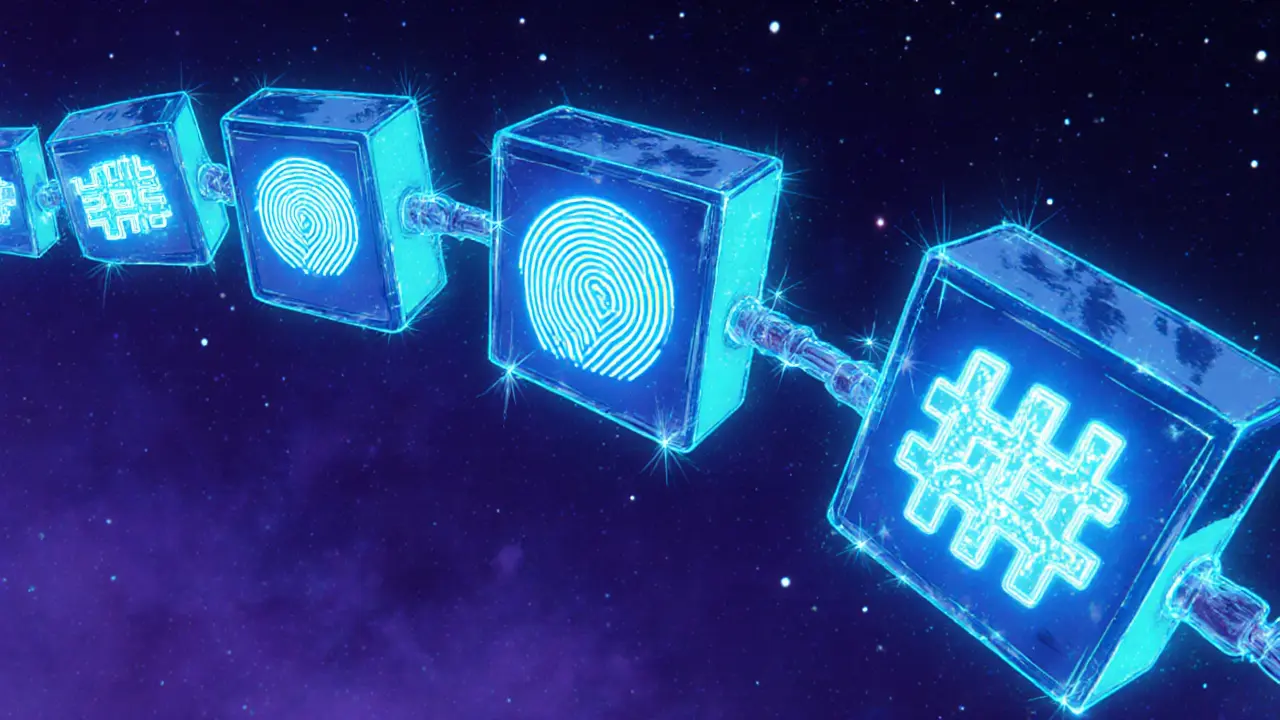Blockchain Immutability – The Bedrock of Trusted Crypto
When talking about blockchain immutabilitythe ability of a blockchain to prevent any alteration of recorded data after it’s been confirmed. Also known as immutable ledger, it forms the trust layer that lets anyone rely on the history without needing a central authority.
Key Concepts Behind Immutability
One of the core tricks behind this tamper‑proof property is the Merkle treea cryptographic data structure that hashes transactions into a single root hash. Every new block includes the previous block’s root hash, creating a chain of hashes where changing a single transaction would break the whole chain. This makes retroactive edits practically impossible because you’d have to recompute billions of hashes instantly.
But hashing alone isn’t enough. In proof‑of‑stake systems, validator nodesparticipants that lock up stake to propose and attest to new blocks play a vital role. Validators are incentivized with rewards and penalized through slashing if they try to cheat. Their collective agreement on the next block cements the data, reinforcing immutability through economic security.
Contrast this with decentralized databasesdistributed storage systems that lack built‑in consensus and cryptographic linking. While they can improve availability, they usually don’t provide the same guarantee that once data is written it can’t be altered. The difference lies in the consensus layer and immutable hash chaining that blockchains embed by design.
These building blocks connect in a clear chain of logic: blockchain immutability encompasses cryptographic hashing, relies on validator participation, and outperforms traditional decentralized databases in preventing tampering. The result is a reliable, auditable record that anyone can verify without trusting a middleman.
Understanding how Merkle trees, validators, and consensus interact also helps you evaluate new projects. If a token claims “immutable” but uses a weak consensus or central control, the promise may fall short. Look for open‑source implementations, transparent staking incentives, and a clear root‑hash linkage in the block header.
Another angle is the role of smart contracts. When a contract stores critical state, immutability protects against accidental or malicious state changes. Developers often embed Merkle proofs within contracts to verify off‑chain data without exposing the whole dataset, keeping the on‑chain footprint small yet secure.
From a user perspective, immutability means you can trust that your transaction history won’t be erased or tweaked. It also enables features like verifiable credential sharing, supply‑chain traceability, and immutable voting records. These use‑cases rely on the same hash‑linking principle that secures Bitcoin and Ethereum.
In practice, the combination of cryptographic structures, economic incentives for validators, and a transparent consensus algorithm creates a self‑policing system. When you see a blockchain that publishes its validator set, staking rewards, and root‑hash per block, you’re looking at a platform that really lives up to the promise of immutability.
Below you’ll find a curated set of articles that dive deeper into each of these pieces – from Merkle‑Patricia tree comparisons to validator node setups, from proof‑of‑stake rewards to how blockchain differs from traditional databases. Explore the guides to see concrete examples, step‑by‑step tutorials, and real‑world case studies that illustrate why immutability matters today.
Explore the technical tricks behind blockchain immutability, from cryptographic hashes to PoW and PoS, and learn why tampering is practically impossible.
Read More





